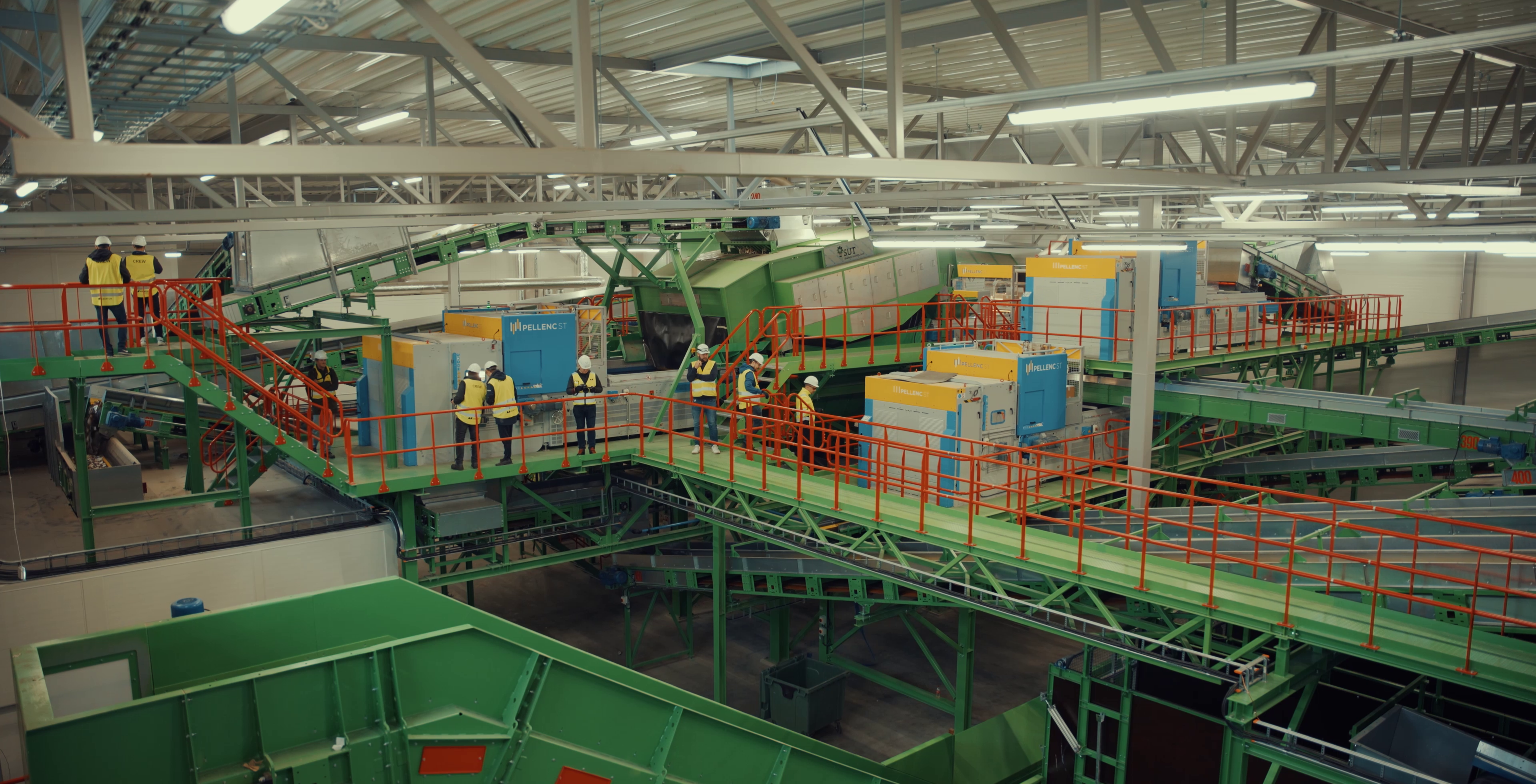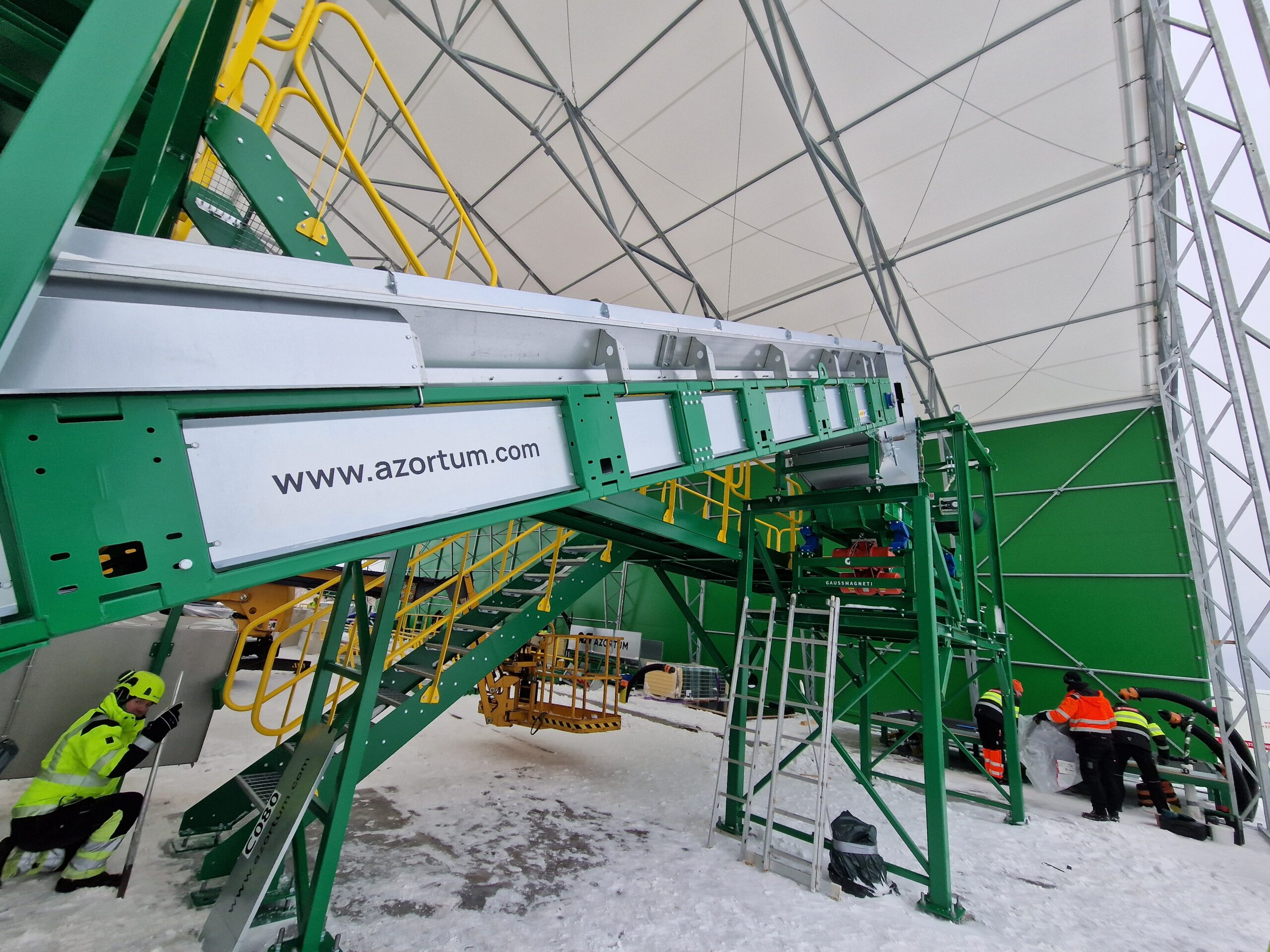Reducing fire risk at waste management sites and the role of automated sorting solutions

Reducing fire risk in waste management facilities is critical for ensuring safety, protecting the surrounding environment, and running operations smoothly.
Installing automated sorting solutions is one of the most effective ways to mitigate fire risk at waste management sites. These systems not only enhance the efficiency and accuracy of the sorting line but also play a vital role in reducing fire hazards often associated with traditional waste management practices.
How automated waste sorting solutions prevent fires
Automated waste sorting solutions offer several key benefits for fire prevention in waste management facilities. They leverage advanced technologies such as optical sensors, AI-driven algorithms, and robotic arms to accurately sort and process waste materials, minimizing the risks associated with improper waste handling and storage.
Here are five ways in which automated waste sorting solutions improve fire safety in your operations:
- 1. Reduction of combustible materials in landfills and waste facilities
Automated waste sorting systems help prevent fires by reducing the amount of combustible material that ends up in landfills and waste storage areas. By accurately sorting and diverting flammable or hazardous materials, these systems ensure that materials are properly processed or recycled rather than mixed with general waste, where they can become a fire hazard.
-
Precise identification and separation: Automated systems can identify flammable materials, such as paper, plastics, and textiles, and separate them from other waste streams. This prevents these materials from accumulating in large quantities, where they could potentially ignite.
-
Organics management: Automated systems also reduce the amount of methane-producing material in landfills by sorting organic waste and diverting it to composting or anaerobic digestion processes. Methane is a highly flammable gas that can accumulate and lead to spontaneous combustion if not properly managed.
For the same reason, automated systems are used extensively in one of Azortum's latest projects, an MSW sorting line in Latvia.

- 2. Enhanced hazardous waste management
Hazardous materials, such as chemicals, batteries, and electronic waste, pose significant fire risks if not properly handled. Automated waste sorting systems identify and segregate these materials from the general waste stream, processing them according to safety protocols.
-
Battery and e-waste separation: Advanced sensors can detect and separate batteries and electronic waste. Batteries can cause fires if they short-circuit or come into contact with other materials. By isolating these items, automated systems prevent potential fire incidents in storage and processing areas.
-
Chemical waste handling: Automated sorting solutions can identify and direct chemical waste to appropriate disposal or treatment facilities, reducing the risk of chemical reactions that could lead to fires.
- 3. Minimizing human error and increasing efficiency
Human error is a common cause of fires in waste management facilities. Automated systems significantly reduce the likelihood of these errors by taking over the most critical sorting tasks. It also keeps the processing of waste materials consistent.
-
Consistency in sorting: High precision and consistency reduce the risk of improperly sorted materials, which could increase fire risk. For example, a manual sorting error could result in flammable materials being placed near a heat source, leading to a potential fire.
-
Real-time monitoring and adaptation: Advanced automated systems often have real-time monitoring capabilities. These systems can adapt to changing waste compositions and operational conditions, detecting potential risks and addressing them immediately.
- 4. Reduction of heat generation through efficient waste management
The decomposition of organic waste and the compression of materials in landfills generate significant heat, which can lead to spontaneous combustion if not properly managed. Automated waste sorting solutions help mitigate this risk by streamlining the waste management process and reducing the likelihood of heat buildup.
-
Efficient material processing: By rapidly sorting and processing waste, automated systems prevent the long-term accumulation of organic materials that could generate heat over time. This efficiency reduces the potential for heat buildup and later fires.
-
Controlled material flow: Automated systems can manage the flow of waste materials more effectively than manual systems. Materials will be more prone to decomposition, while heat generation is controlled more efficiently.
- 5. Integration with fire prevention technologies
Many automated waste sorting systems can integrate fire detection and suppression technologies, creating a comprehensive fire prevention strategy for waste management facilities.
-
Early fire detection: You can equip automated systems with sensors that check the sorting process for signs of fire, such as smoke or elevated temperatures. If a fire is detected, the system can immediately respond, activating suppression systems or alerting facility operators. Firefly's ShredderGuard™ and ConveyorGuard™ systems are tailored for high-risk areas, such as shredders and conveyor belts, prone to friction-related ignitions.
-
Automated fire suppression: In some advanced setups, automated waste sorting systems, such as sprinklers, foam dispensers, and other rapid-response water spray systems, can be linked to automated fire suppression systems. These systems are designed to detect and extinguish fires within milliseconds, preventing the spread and minimizing damage.
These solutions safeguard equipment and ensure minimal water usage, preserving machinery integrity while mitigating costly downtime and environmental impact.
This tire recycling line, which produces materials for oil production, requires fire protection systems to ensure safety.


Supporting the circular economy while also enhancing safety
Besides preventing fires, automated waste sorting solutions contribute to the circular economy by maximizing resource recovery and reducing waste sent to landfills. This not only promotes sustainability but also impacts the safety and efficiency of waste management facilities.
-
Resource recovery: Automated sorting systems increase the recovery of valuable materials, such as metals, plastics, and paper, which can be recycled and reintroduced into the production cycle. This reduces the volume of on-site waste, reducing fire risks at waste management sites.
-
Waste minimization: Automated systems help cut the waste footprint by diverting materials from landfills and processing them in controlled environments. This, in turn, reduces fire hazards associated with large-scale waste accumulation.
Automated waste sorting solutions are vital to modern waste management strategies. By reducing combustible materials, enhancing the handling of hazardous waste, and minimizing human error, these systems play a crucial role in keeping waste management facilities from fire risks.
Moreover, by supporting the principles of the circular economy, automated sorting systems contribute to a more sustainable and resilient waste management infrastructure. As technology advances, integrating computerized solutions will become more critical in ensuring waste management operations' safety, sustainability, and efficiency, protecting both people and the environment from the dangers of landfill and facility fires.
Write us about your project!
At Azortum, we are committed to developing unique solutions that would be sustainable to operate and profitable for your company.
We have received your information and will be in touch with you shortly. Thanks!
